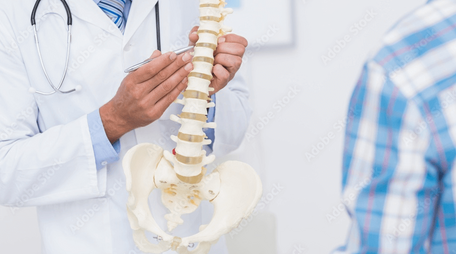C2 Fracture Therapeutic Challenge
Fractures of the second cervical vertebra (C2) are quite frequent, mainly in the elderly population and they put a therapeutic challenge to spinal surgeons: in the elderly patient, bone healing is slow and often incomplete without surgical instrumentation, having as a result a pseudarthrosis, with mechanical instability leading to pain and sometimes even neurological risks. On the other hand, operating on an elderly patient under general anaesthesia can be complicated and risky. Several studies have addressed this therapeutic dilemma.
Webinar on Decision Making between Surgical and Non-Surgical Treatment
In March 2022, EUROSPINE held a webinar for spine care clinicians. The focus of the webinar was on the decision making between surgical and non-surgical treatment for fractures of the C2 vertebra. Arguments for each of the two following strategies were presented: surgical instrumentation (by a technique depending on the anatomical characteristics of the fracture), against external immobilisation by a hard collar (several types, of which the “Philadelphia” type is the more common), for a period of months, until a fusion or a stable fibrous (even if not osseous) union occurs.
Advantages and Disadvantages of Surgical Treatment
The main advantage of the surgical treatment is that it offers a stable fusion much more often than non-surgical immobilisation. According to the rates presented, non-surgical treatment carries to a significant risk of pseudarthrosis (10-50%, depending on the patient population and the fracture type). In total, many studies show a superiority of surgical treatment concerning fusion. Complication rates are not necessarily higher in surgically treated patients, as surgical complications are outweighed by the benefit of the immediate post-operative mobilisation. However, there are many limitations of the studies presented (heterogeneous populations and fracture types, differences in surgery timing, choice of technique, methods to confirm fusion, absence of quality-of-life outcome measures).
Advantages and Disadvantages of Non-Surgical Treatment
The main advantage of non-surgical treatment is the avoidance of surgery-related morbidity and mortality, in this highly fragile population. As a response to the fact that osseous union rates are lower, it has been reported that even in the case of only fibrous union, quite often stability is adequate, and the clinical outcome is comparable to the one of surgical treatment. Indeed, many studies report high clinical success rates (reduced pain and return to everyday activities) after hard collar immobilisation. Thus, as it is shown by statistics based on national spine surgery registries, non-surgical treatment is chosen much more often than surgery by spine specialists (80% vs 20%). There is also some evidence of relatively higher overall complication rates in operated patients, and it is reported that the need for late surgery in pseudarthrosis cases remains very low (2%).
Conclusion
The treatment choice for C2 fractures remains controversial. The choice should be made based on individual patient and fracture characteristics. Good clinical outcome does not necessarily depend on radiological osseous union. Displaced type 2 odontoid fractures should better be treated surgically. For fragile patients with a risk for respiratory complications after intubation, conservative treatment should be considered first. Biological age by itself is neither a contra-indication for surgery nor an objective predictive factor for the clinical result of conservative treatment. In any case, rapid mobilisation is a primary goal of treatment, surgical or not.



